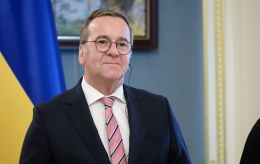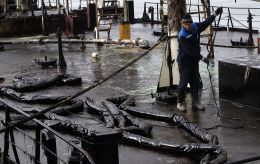NATO under Trump. Possibility and consequences of US withdrawal from alliance
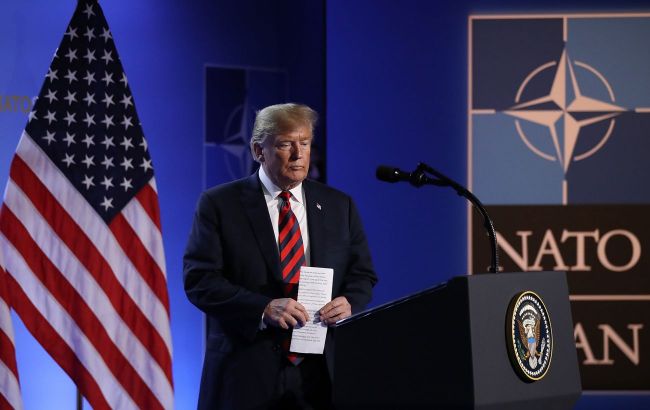 Future US President Donald Trump (photo: Getty Images)
Future US President Donald Trump (photo: Getty Images)
Donald Trump is threatening to withdraw the United States from NATO. This raises questions about whether this is possible, what challenges the alliance faces, and whether European NATO members can ensure their security independently.
Contents
- Where NATO expects attacks
- Should NATO count on the United States?
- Does NATO make sense without the United States?
- Consequences for Ukraine
The first NATO Secretary General, the British Hastings Ismay, once formulated the alliance's purpose as follows: “Keep the Russians out, the Americans in, and the Germans down”. To a certain extent, this statement is still true today, only in a more acute form. NATO is facing a number of external and internal challenges, and Donald Trump's rise to power in the United States is just one of them.
During his first presidency, Donald Trump was skeptical of NATO as a collective force that could maintain security in the North Atlantic. He said that European members spend little on defense and use the security umbrella provided by the United States, the most powerful member of the alliance. There was even talk of a possible US withdrawal from NATO.
On the eve of his second presidency, Trump is voicing the same claims, although Europeans have begun to spend more on their defense. In general, the threat to the European members of the alliance from Russia has become more than obvious.
All of this means challenges for Ukraine as well because NATO countries have become our rear in deterring Russian aggression.
Where NATO expects attacks
Supporting Ukraine remains a top priority for NATO as an organization in general and for its European members in particular. Security in the Black Sea remains equally important to NATO. However, the Ukrainian Defense Forces have seriously thinned out the Russian Black Sea Fleet and military infrastructure in the occupied Crimea, so the threat in this area is relatively less.
At the same time, European intelligence data indicate that Russia does not plan to stop at Ukraine and is preparing for aggression in other areas. In February, German Defense Minister Boris Pistorius did not rule out an attack on a NATO member state in the medium term.
He said he could not predict whether and when an attack on NATO territory might occur, but it could happen in five to eight years.
In June, Norwegian Armed Forces Commander-in-Chief Eirik Kristoffersen said in an interview with Bloomberg that NATO has two to three years to prepare for a possible confrontation with Russia. This timeframe is related to the restoration of Russia's military potential after a full-scale invasion of Ukraine. Moreover, this threat will increase if part of the sanctions against Russia is lifted during the negotiations.
November 27 President of Germany's Federal Intelligence Service Bruno Kahl said that Russia may try to achieve disunity among NATO members. Speaking at a conference of the German Society for Foreign Policy, he noted that Russia, in particular, could launch aggression against the Baltic states. Among the potentially dangerous areas of attack is, first of all, the Suwalki corridor, a narrow section connecting Poland and Lithuania.
According to Kahl, another potential point of attack is the Norwegian archipelago of Svalbard. Its legal status is somewhat specific. According to a special treaty dating back to 1920, Norway has sovereignty over the archipelago, but Russia and a number of other countries have the right to use its resources. Russia regularly conducts military exercises near the islands, although this area is considered a demilitarized zone.
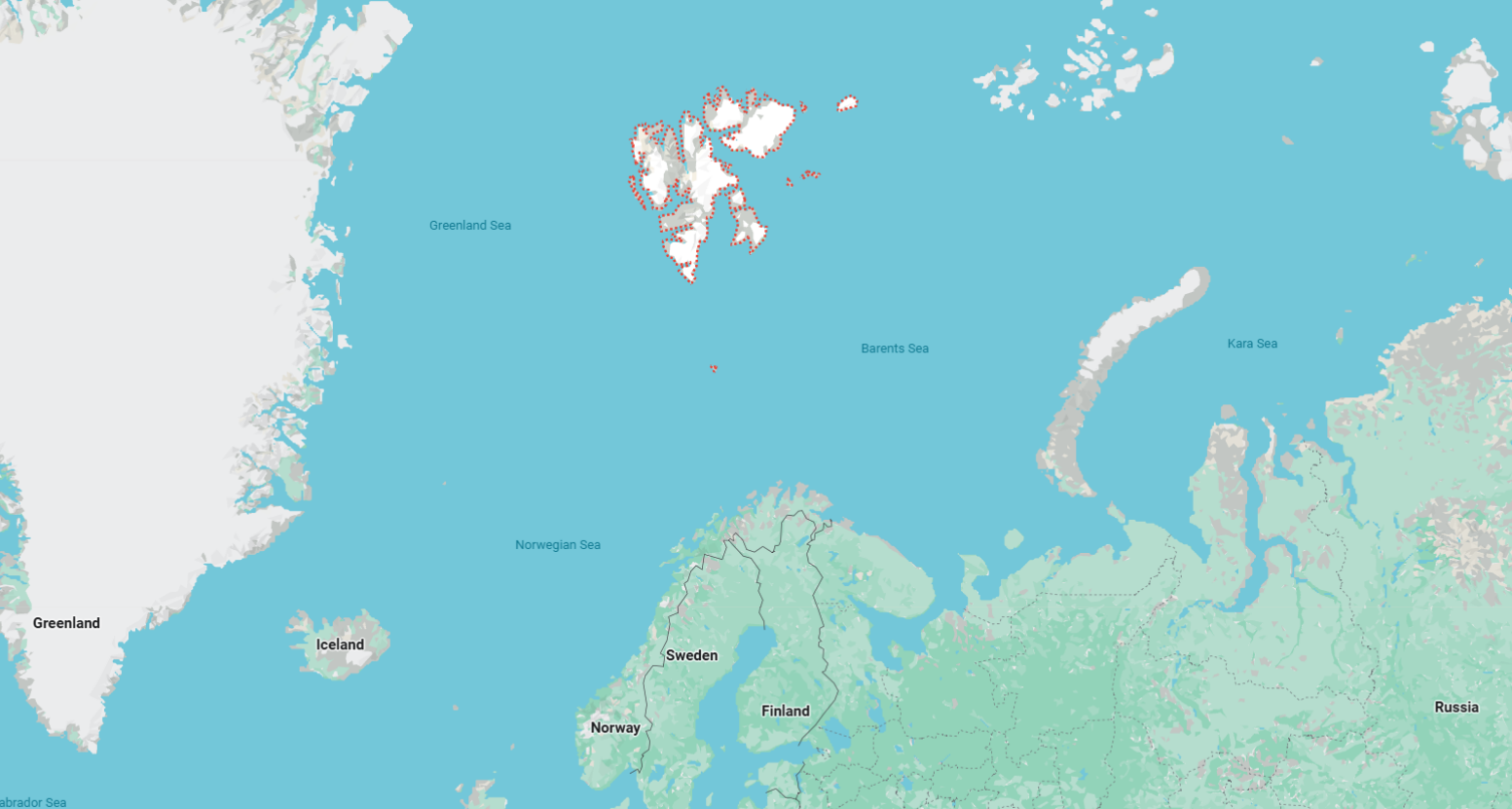 North Atlantic. Svalbard archipelago in red (Google Maps)
North Atlantic. Svalbard archipelago in red (Google Maps)
The Arctic is generally a little-noticed but increasingly important region for NATO. Russia's Northern Fleet includes missile cruisers, large amphibious assault ships, and even strategic nuclear submarines with nuclear warheads.
The Arctic is the shortest route for intercontinental ballistic missiles that Russia could potentially launch at the United States and Canada. In addition, due to global warming, the so-called Northern Sea Route is opening up for shipping, allowing Russia to export hydrocarbons via a short route to Asia.
NATO Secretary General Jens Stoltenberg said in August 2024 that Russia was massively decommissioning Soviet facilities, increasing its presence in the region.
And this, he said, is forcing NATO to double its contingent in the Arctic.
Should NATO count on the United States?
Against the backdrop of all these threats, the main question is whether European NATO members can count on support from across the ocean.
The US president-elect links US participation in NATO to an increase in defense spending, which, in his view, should be provided by Washington's European partners.
Trump said in an interview with NBC News on December 8 that he would consider leaving NATO if allies didn't pay bills.
During his first term, Trump insisted that European NATO members should spend at least 2% of GDP on defense. Now, however, according to the Financial Times, he will demand an increase in spending to 5% of GDP.
Earlier, during the election campaign, Trump threatened not to defend low-spending allies. For example, in February, he recounted a conversation with an unnamed foreign leader about what could happen: “One of the presidents of a big country stood up and said, ‘Well, sir, if we don’t pay and we’re attacked by Russia, will you protect us?'” I said, ‘You didn’t pay. You’re delinquent.’ He said, ‘Yes, let’s say that happened.’ No, I would not protect you. In fact, I would encourage them to do whatever the hell they want.”
Whatever is behind these statements, in the event of Russian aggression in the United States, the decision will be made by an opportunist politician who acts on the principle of “you to me, I to you.” And this is the main risk for European NATO members.
“I think this will not happen now. That is, he had a condition “pay or we will withdraw”. Trump did what he did then, in simple terms, was blackmail,” Pavlo Zhovnirenko, chairman of the board of the Center for Strategic Studies, told RBC-Ukraine.
At the same time, the concept of paying the bills can be very broad. Although during his first term, Trump insisted that all members of the alliance should spend at least 2% of the country's GDP on defense, not all members of the alliance have reached even this figure. Moreover, it is not certain that Trump will not have other demands related to specific member states.
In 2023, the US Congress passed a law requiring that any presidential decision to withdraw from NATO must be approved by two-thirds of the Senate or authorized by an act of Congress. Currently, the Republicans have only a minimal majority in both chambers of this body, so there are not enough votes to withdraw from the alliance. Not to mention that not all Republicans support such a move.
But as Politico points out, US foreign policy falls under the president's authority, so if Trump makes the decision alone, legal battles are likely, with the Supreme Court deciding everything. And in which the majority are conservative judges appointed by Trump during his first term.
There is another scenario. It was described in the warning novel War with Russia by Richard Shirreff, who was the Deputy Supreme Allied Commander of NATO's Allied Forces Europe from 2011-2014. According to the story, Russia hybridized its attack on the Baltic states by sending in troops to protect the Russian-speaking population. However, the United States and other alliance leaders refrained from invoking Article 5 of the NATO Charter in the first phase of the war. Thus, the Baltic states were left to their own devices.
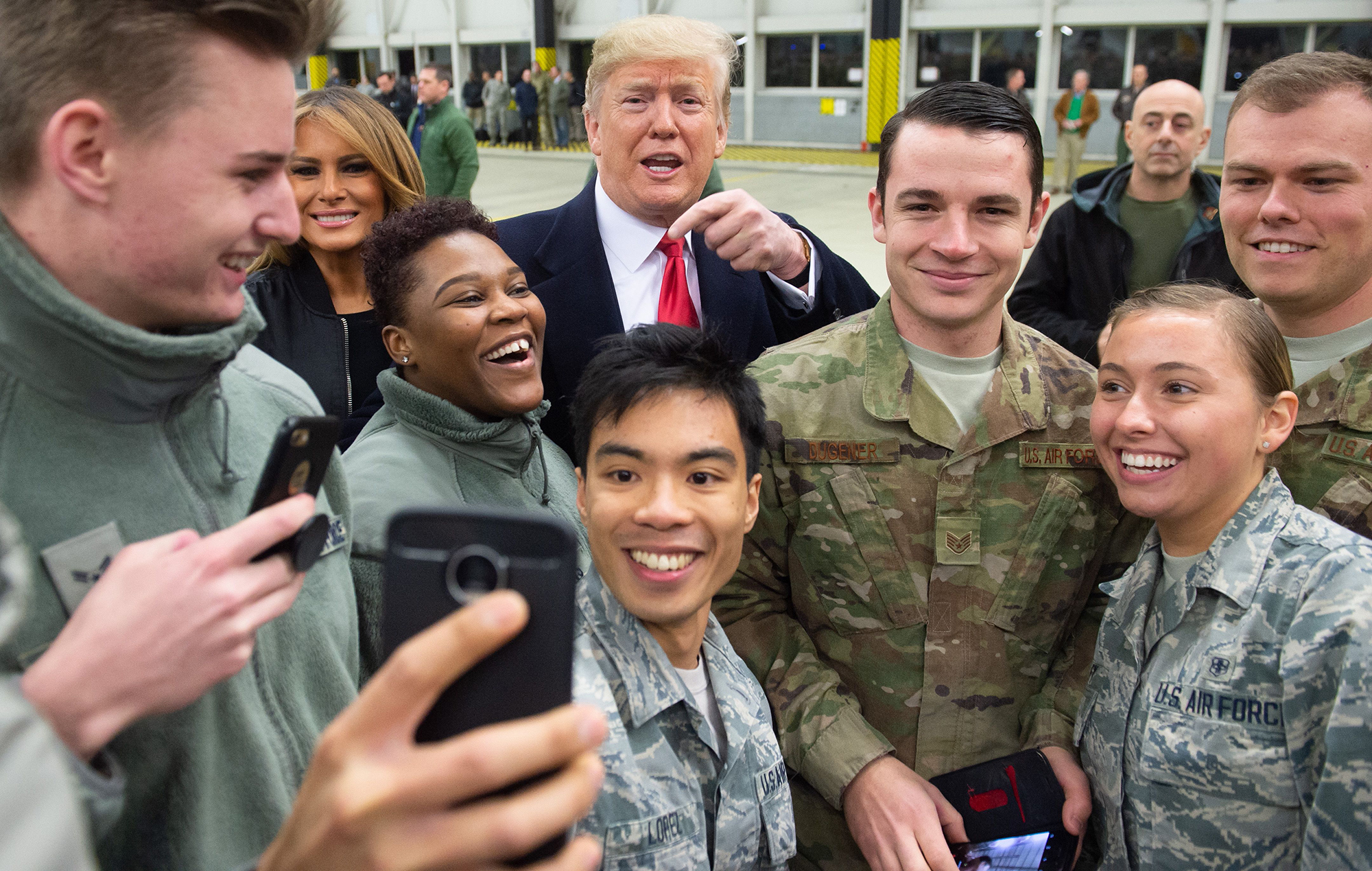
Donald Trump at the US military base Ramstein in Germany, 2018 (photo: Getty Images)
“I can't imagine that the United States will formally withdraw from NATO, but what kind of attitude it will have towards Article 5 and assistance to other alliance countries is an open question,” Andreas Umland, an analyst at the Stockholm Center for Eastern Europe Studies, told RBC-Ukraine.
According to Zhovnirenko, the policy of non-interference fits into previous models of US behavior during world wars.
“Remembering history, I think the United States will delay its direct involvement in any military operations as much as possible. Just like it was during World War I, just like was during World War II. I don't want to be a Cassandra, but it looks like the United States may need a new Pearl Harbor to get them to get involved,” Zhovnirenko said.
In addition, there are many subtle but important ways in which Trump could harm NATO: recalling the American ambassador to the alliance, banning diplomats from attending alliance meetings or cutting off funding for the headquarters.
Does NATO make sense without the United States?
Despite doubts about the political will, NATO has been actively preparing for defense since 2022. The Alliance has deployed four multinational battlegroups in Bulgaria, Hungary, Romania, and Slovakia. This is in addition to four more in the Baltic States and Poland. The construction of fortifications on the Baltic states' border with Russia is also in full swing.
At the Vilnius Summit in 2023, the most detailed defense plans since the Cold War and an action plan for defense production were approved. The Alliance is also strengthening the Joint Response Force, which would be the first to deter an aggressor.
European NATO members are nevertheless increasing defense spending. According to official NATO data, in 2024, 23 member states spent more than 2% of GDP on defense. Of these, 5 countries spent more than 3%. Among the leaders are Poland, Estonia, the United States, Latvia, and Greece. Southern European countries and Belgium spend the least.
“In my opinion, there is much to criticize Trump for, including about Ukraine, but concerning NATO, he did a very important thing during his first presidency. He simply made it clear that we have to pay, we have to invest in our defense, and we should not rely on the United States. If Trump came in for the first time now, it would be very, very bad, because NATO would not be ready,” Zhovnirenko said.
The countries of Central and Eastern Europe, which have already reached the 2% mark, are lobbying for a further increase in defense spending with the support of the new NATO Secretary General, Mark Rutte. And their insistence seems to be heard.
According to Bloomberg, NATO is considering raising the defense spending rate from 2% to 3%. The agency's interlocutors note that the priorities will be to strengthen air defense, offensive weapons systems, and nuclear deterrence capabilities. It is not known when exactly the standard will be introduced, but as a rule, such decisions are made at annual NATO summits. The next one will be held in June next year in The Hague.
Importantly, European NATO members already have their nuclear umbrella. Although it is not as powerful as the American one.
“The UK and France are more decisive, they are also nuclear powers, and they take such commitments (within NATO) more seriously. I think, ultimately, so will Germany. That is, the solidarity within NATO remains, even without the United States,” Umland told RBC-Ukraine.
But ultimately, all these plans rest on the available resources - with or without the participation of the United States. And here the situation is ambiguous.
According to the Statista aggregator, the size of the US armed forces is 1.328 million people; France - 200 thousand; the United Kingdom - 184 thousand; Germany - 181 thousand.
At the same time, the United States has about 80,000 military personnel deployed in Europe alone, Bloomberg notes. According to experts interviewed by the publication, the UK could at best gather 20 to 30 thousand soldiers, although this is likely to take more than a month. France could mobilize 20,000 in 30 days. Germany could probably deploy a single brigade of several thousand in the Baltic states.
According to the International Institute for Strategic Studies (IISS), the United States has a total of 46,392 armored vehicles; European NATO members have a total of 32,995. Of these, the UK has 2,010, France has 2,940, and Germany has about 2,300.
Combat aircraft - the United States has 3,493, and European NATO members have 2,017. Of these, the UK has about 200, France 300, and Germany 255.
The agency notes another important nuance: there are not many generals in Europe with experience in planning or commanding large-scale joint force operations involving several countries.
Consequences for Ukraine
In such circumstances, the key to the security of European NATO countries remains Ukraine, which is methodically destroying and distracting Russian troops. Both Ukraine and NATO understand this, at least among the countries bordering Russia. In June, the Director General of the Estonian Foreign Intelligence Service, Kaupo Rosin, said that a war between Russia and NATO was not inevitable, but that much could still be done to contain the Kremlin.
Rosin told Foreign Policy in March 2924 that many future scenarios depend on our activities in the West, the specific task is to make Ukraine successful in this war because the future of Europe strongly depends on the outcome of this war.
Back in July, at the Washington summit, NATO members developed autonomous mechanisms for coordinating aid to Ukraine, just in case Donald Trump tries to block the aid.
According to Reuters sources, they became operational in December. The headquarters of the NATO mission for Ukraine at the military base in Wiesbaden called the NATO Security Assistance and Training Unit for Ukraine (NSATU), is already fully operational.
Ukraine also receives assistance under bilateral security agreements with 27 countries. Assistance has been confirmed for the next few years.
“We see that when planning the budgets of our allies, even if this amount is not immediately included, the authorities remember the amounts allocated for 2024, and the position is no less,” Deputy Head of the Office of the President of Ukraine Ihor Zhovkva said on December 10.
However, questions remain about the supply of specific weapons, as Trump has made contradictory statements about military aid to Ukraine.
European members of the alliance can only partially replace the United States. In addition, concerns about the actual participation of the United States in NATO may force some European countries to keep their military resources at home instead of supplying Ukraine.
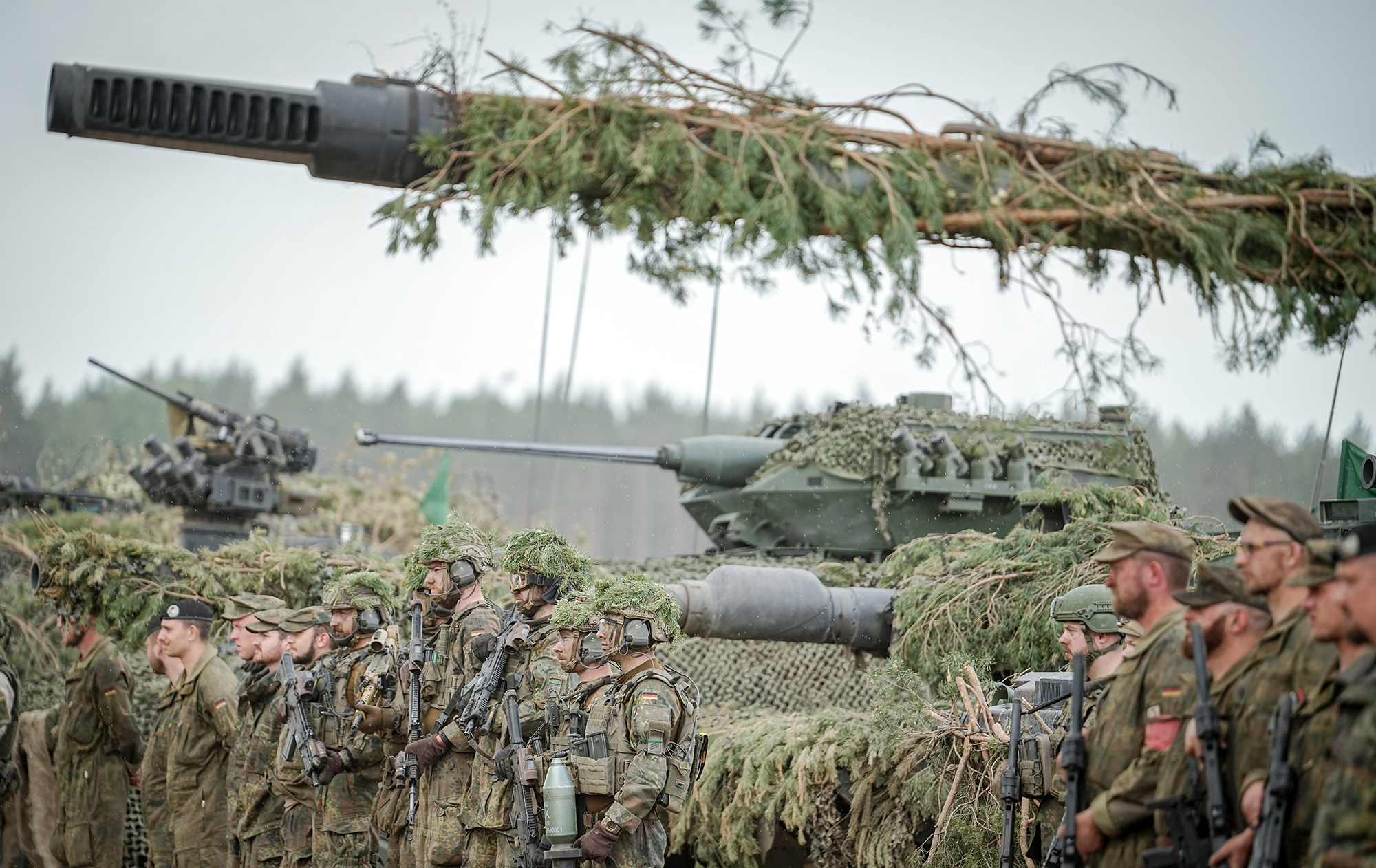 German troops in Lithuania, May 2024 (photo: Getty Images)
German troops in Lithuania, May 2024 (photo: Getty Images)
Added to all this are the internal challenges faced by the leading European NATO countries. In Germany, the ruling coalition has just collapsed, with the 2025 budget being one of the problematic issues. In France, President Macron is struggling with a disloyal parliament and has been forced to change the government. In the UK, the ruling party's ratings have plummeted due to its inability to solve systemic internal problems and, again, the budget deficit. And Russia is using hybrid methods to deepen its internal crises through disinformation and support for radical and extremist political forces.
In such circumstances, strangely enough, in the security sphere, Ukraine can give NATO almost more than the Alliance can give Ukraine. The Ukrainian Armed Forces are already actually defending the eastern flank of the alliance. This thesis has already been communicated in conversations with Trump's entourage. In addition, back in October, Ukraine offered to replace US troops in the US bases in Europe. In particular, this is envisaged in paragraph 5 of the Victory Plan presented by Volodymyr Zelenskyy.
Since the prospects for Ukraine's accession or even invitation to NATO remain extremely vague, it remains to develop actual cooperation to strengthen Ukraine's defense. This seems to be the maximum that Ukraine can get so far.
Sources: NATO website, The Atlantic, Politico, Bloomberg, International Institute for Strategic Studies, Reuters, exclusive comments of Pavlo Zhovnirenko, Chairman of the Board of the Center for Strategic Studies, and Andreas Umland, analyst at the Stockholm Center for Eastern Europe Studies.
